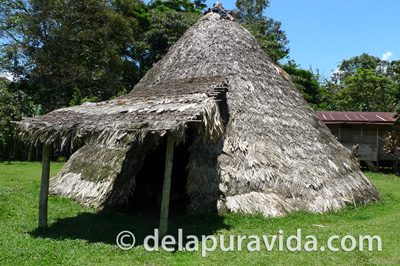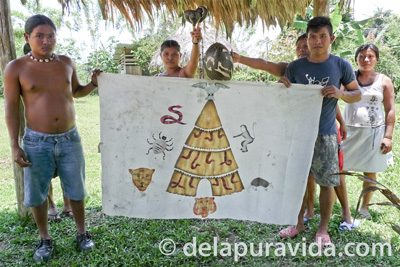By Lou Cheek.
All of us have heard native Costa Ricans refer to themselves as Ticos – it’s a term that has come to embody the warm, friendly people who have welcomed expats into their country and their culture. It’s a term that we use almost daily, but have you ever stopped and wondered who exactly the Ticos are?
When Columbus dropped anchor in the Bay of Cariari near what is now Puerto Limón on the 18th of September, 1502, the lush landscape and the gold he received from the local people inspired him to call the area La Huerta (The Garden). In 1522, Gil Gonzalez Davila gave the name Costa Rica (Rich Coast) based on the gold worn by local people and on the dreams of untold wealth that fueled so much of the Spanish conquest of Central and South America. Long before either of these events, however, several different tribal groups with diverse cultural and social backgrounds lived and prospered in the land of Pura Vida.
During the Pre-Columbian era, Costa Rica was home to as many as 25 different tribal groups. While the identities of some have vanished in the mists of time, several have left an indelible mark. Societies like the Boruca, Guatusos, Bribris, Cabecar, Talamascas, and Terrebas still have members who know their people’s legends and, in some cases, can still speak the language. Other tribes such as the Chorotegas, Teribes, and the mysterious Diquis and Chibchas have become completely absorbed into the multicultural blend of current native born Costa Ricans; fortunately some traces of their culture can still be found.
In the northern Pacific area, in and around Nicoya, the Chorotegas (exiles from southern Mexico), brought their culture and beliefs to this new land. The name, Chorotega, is thought to mean either “fleeing people” (certainly appropriate for a group who left their home in search of a better life) or “residents of Cholula,” the city in Mexico where they are thought to have originated. Much like the Aztec and Mayan cultures, the Chorotegas had a strict class system and a strong priesthood which ruled over the tribe.
In the province of Guanacaste, the Nahua people – who also came from Mexico and were descendents of the Aztecs – had their community in the Bagaces region. The Nahua people had settled throughout Central America and became known as guatusos in Costa Rica. They had a complex view of the world which included both the horizontal and vertical dimensions.
Southwestern Costa Rica was, and still is, home to the Boruca people. These people, well known for their art, pottery, weaving and other crafts, ruled most of the southern Pacific coast from the area around what is now Quepos to the border with Panama. There are still roughly 2,000 members of the tribe who live on the Reserva Boruca-Terraba in the province of Puntarenas. They are renowned for their annual celebration, Danza de los Diablitos, which commemorates the Boruca people resisting the Spanish.
Southern Costa Rica was also home to the Diquis and Chibchas. While both groups were smaller in size, the Diquis have left one of the most interesting mysteries in Costa Rica – the Diquis Spheres. These stone spheres have been the subject of research and speculation since their discovery. All that is certain is that they pre-date Columbus’ arrival. What other secrets the Diquis Delta holds remain for all who visit to discover.
Lastly, the East Coast of Costa Rica was home to the Carib people, who lived and loved the ocean as both navigators and shipbuilders. The term Carib applies to a number of groups who all shared a common culture. Generally believed to have originated near the Orinoco River in South America, these explorers spread throughout the Caribbean and Central America during the 13th Century, merging their culture with smaller local groups along the way. Many believe that a local tribe of Carib were the first people that Columbus encountered in Costa Rica during his arrival in 1502; unfortunately no trace of their culture exists today.
So who are the Tico? They certainly are more than just people of Spanish descent, although that is the common belief of the origin of the term. The cultures and beliefs of all the various groups who preceded the Spanish to the beauty and diversity of Costa Rica have all blended to make this a special place. Now, in the 21st century, a new group of explorers – expats from the United States and elsewhere – are coming in search of their own golden tomorrow. I guess the simple answer to the question “Who Are the Ticos?” is that WE ALL ARE.
PURA VIDA


